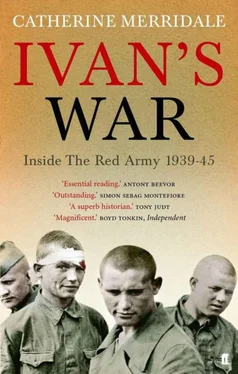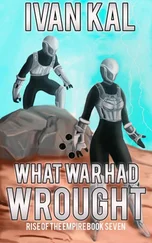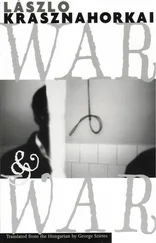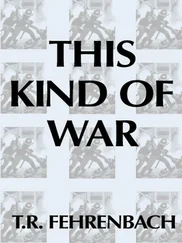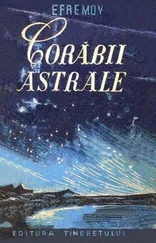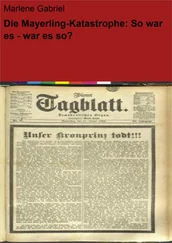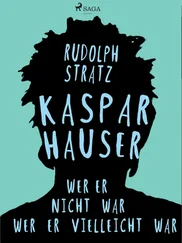32 TsDNISO, 6/1/1697, 190.
33 GAKO, 3322/10/46, 30 and 41.
34 Pis’ma s fronta i na front , 98. A pood weighs about thirty-six pounds. Even if they supplemented their diet with potatoes, Masha’s family would get through a pood of flour in two months.
35 TsDNISO, 6/1/1695, 144, 219.
36 RGVA, 32925/1/515, 70.
37 TsDNISO, 8/2/109, 15.
38 TsDNISO, 6/1/1484, 33 and 39.
39 See, for example, GAKO, R 3322/10/1, which defines their role in February 1943, following the city’s liberation.
401 Garrard and Garrard, Bones , p. 155.
41 This preference, which survivors attest to, was also noted by local police and the officials in charge of trophies.
42 RGASPI-M, 33/1/1406, 52.
43 RGASPI-M, 33/1/1208, 71.
44 TsAMO, 136/24416/24, 275.
45 RGASPI-M, 33/1/1494, 48.
46 Stroki, opalennye voiny , p. 182.
47 RGVA, 32925/1/514, 47.
48 Yu. N. Afanas’ev (Ed.), Drugaya voina (Moscow, 1996), p. 433. This source claims that the comparable increase among British troops was 200 per cent.
49 Armstrong, p. 164.
50 For an example, see RGVA 32925/1/515, 267.
51 GAKO, R3322/9/93, 15.
52 RGASPI-M, 33/1/1454, 78.
53 Alexiyevich, p. 65.
54 Pennington, Wings , p. 67.
55 Temkin, p. 202.
56 RGASPI-M, 33/1/1494, 48.
57 Ibid ., 78–9.
58 RGASPI-M, 33/1/1405, 100.
59 Ibid ., 64–5.
60 Hunger was especially severe in the countryside, as rural people often had no right to ration cards. The theft of food anywhere in the Soviet Union was punishable by death. See William Moskoff, The Bread of Affliction , pp. 108–9.
61 RGASPI-M, 33/1/1404, 7.
62 Ibid ., 8 and 5.
63 Ibid ., 3.
64 RGASPI-M, 33/1/1405, 17.
65 RGASPI-M, 33/1/1454, 61.
66 Alexiyevich, p. 79.
67 On blood donors, see Overy, p. 227.
68 RGASPI-M, 33/1/493, 1–6.
69 Samoilov, ‘Lyudi’, part 1, p. 70.
70 RGASPI, 17/125/80, 3.
71 GAKO, 5166/1/24, 4–7.
72 Reina Pennington, ‘Women in Combat in the Red Army,’ in Addison and Calder (Eds), Time to Kill , p. 257.
73 GAKO, 5166/1/24, 4.
74 Reese, The Soviet Military Experience , p. 110.
75 Leonid Piterskii, ‘Deti na voine,’ Istochnik , 1994, no. 1, 54–60.
76 Samoilov, ‘Lyudi’, part 2, p. 79.
77 Soldiers seem to crave the companionship of animals. On other armies, see Keegan, p. 242. On other front-line dogs, see Bykov, Ataka s khody , p. 189.
78 Samoilov, ‘Lyudi’, part 2, pp. 68–70.
79 V. A. Zolotarev, G. N. Sevost’yanov et al. (Eds), Velikaya otechestvennaya voina , 1941–1945 (Moscow, 1999), book 4, pp. 189–90.
80 For figures relating to Ukraine, see Weiner, p. 173.
81 Velikaya otechestvennaya voina , 4, p. 190.
82 One such band, Leshchinskii’s, was liquidated near Smolensk on the grounds that it had refused to ‘accept the leadership of the Communist Party’. GAOPIKO, 8/1/36, 14–16.
83 Werth, p. 792.
84 Drugaya voina , pp. 318–9; the latter fate awaited Aleksandr Solzhenitsyn, for instance, and also Lev Kopelev. See Chapter 9, p. 268.
85 TsDNISO, 8/1/9, 10.
86 GASO, 1500/1/1, 42.
87 Overy, pp. 130–1.
88 RGASPI, 17/125/94, 34–6; 17/125/165, 46 and 46r.
89 Early in the war, Ukrainian nationalists had worked with the German army, since both appeared to share the goal of driving out the Bolsheviks. The shaky alliance was already in tatters by 1942.
90 Stalin’s Generals , pp. 296–7; Overy, p. 311. It was in revenge for acts like this that suspected guerrilla nationalists, as well as prominent collaborators, would be hanged in public in Kiev in 1944.
91 See Weiner, pp. 248–50.
92 RGASPI-M, 33/1/73, 1–5.
93 See the report reproduced in Armstrong, p. 735.
94 GASO, 1500/1/1, 40.
95 Ibid ., 39.
96 Armstrong, p. 731.
97 GASO, 1500/1/1, p. 44.
98 See Armstrong, p. 45.
99 GASO, 1500/1/1, 46.
100 Ibid ., 52.
101 Cited in Armstrong, p. 738.
102 GASO, 1500/1/1, 52.
103 Cited in Armstrong, p. 737.
104 Werth, p. 827.
105 Ibid ., p. 830.
106 RGASPI-M, 33/1/1406, 57.
107 As the guides tell you when you walk up to the ridge, ‘Sapun’derives from the Turkish word for soap.
108 Excavations in today’s Crimea still bring the bodies of soldiers to light. As a man who spends his life exhuming such corpses told me, the Soviet dead were much better equipped, by 1944, than those of the Germans they were fighting.
109 Werth, pp. 838–9.
110 Ibid ., p. 835; Erickson, Berlin , p. 195.
111 Brian Glyn Williams, ‘The Exile and Repatriation of the Crimean Tatars’, Journal of Contemporary History, 37:3 (July 2002), pp. 325–7.
112 Most of the Tatars in the so-called ‘Tatar legion’, which anyway amounted to no more than seven battalions by the autumn of 1943, were from the Volga, not the Crimea. See S. I. Drobyazko, ‘Sovetskie grazhdane v ryadakh vermakhta’ in the essay collection, Velikaya otechestvennaya voina v otsenke molodykh (Moscow, 1997), p. 128.
113 The figure that most sources quote is N. F. Bugai’s estimate of just over 191,000 people, or 47,000 families. See P. Polyan, Ne po svoei vole (Moscow, 2001), p. 126; Williams, p. 334.
114 On the deportations from the Caucasus, see Polyan, pp. 116–27.
115 Williams, p. 333.
116 For a discussion of Tatar ‘guilt’, see Alan Fisher, The Crimean Tatars (Stanford, CA, 1978), pp. 153–64.
117 Ibid ., p. 166.
8 Exulting, Grieving and Sweating Blood
1 Accounts of the precise starting point vary because of the scale of the operation. In some places, the first shots were fired on 21 June. Elsewhere the starting date is taken as 22 or 23 June.
2 The front itself was about 450 miles long. Werth, pp. 860–1.
3 Bundesarchiv-Militärarchiv, RH2-2338, 1 (January 1944).
4 Belov, p. 468 (21 March 1944).
5 Ibid ., p. 462 (28 November 1943).
6 Ibid ., p. 465 (12 January 1944).
7 Ibid ., p. 468 (13 March 1944).
8 Ibid ., p. 470 (7 April 1944).
9 Bundesarchiv, RH2-2338, monthly report, March 1944, pp. 1–2.
10 Belov, p. 464 (12 December 1943); p. 465 (17 January 1944).
11 Ermolenko, p. 39.
12 See Catherine Merridale, ‘The Collective Mind’, Journal of Contemporary History , 35:1, January 2000, p. 41.
13 Generally, they were lumped together with other ‘amoral’ or ‘extraordinary’ incidents. If they were explained at all, it was with reference to any suicide note or final remark that existed. Since the soldiers themselves did not know the word ‘trauma’, they naturally attributed their agony to more immediate causes, often unrequited love or political disappointment. For examples from Belarus in 1944, see RGVA, 32925/1/516, 177.
14 For a parallel discussion of the death penalty in the British army at this time, see David French, ‘Discipline and the Death Penalty in the British Army in the War against Germany during the Second World War’, Journal of Contemporary History , 33:4, October 1998, pp. 531–45.
15 I am grateful to Professor Simon Wessely for drawing my attention to the correlation between the statistics for Soviet mental casualties and the average incidence of adult-onset schizophrenia.
16 Richard A. Gabriel, Soviet Military Psychiatry (Westport, CT, 1986), p. 47. This estimate is based on interviews with survivors and their psychologists, as a result of which Gabriel produced a rough figure of 6 per thousand mental casualties for the Red Army as a whole. However crude, this figure compares strikingly with the equivalent 36–39 per thousand in the US army in the Second World War.
Читать дальше
